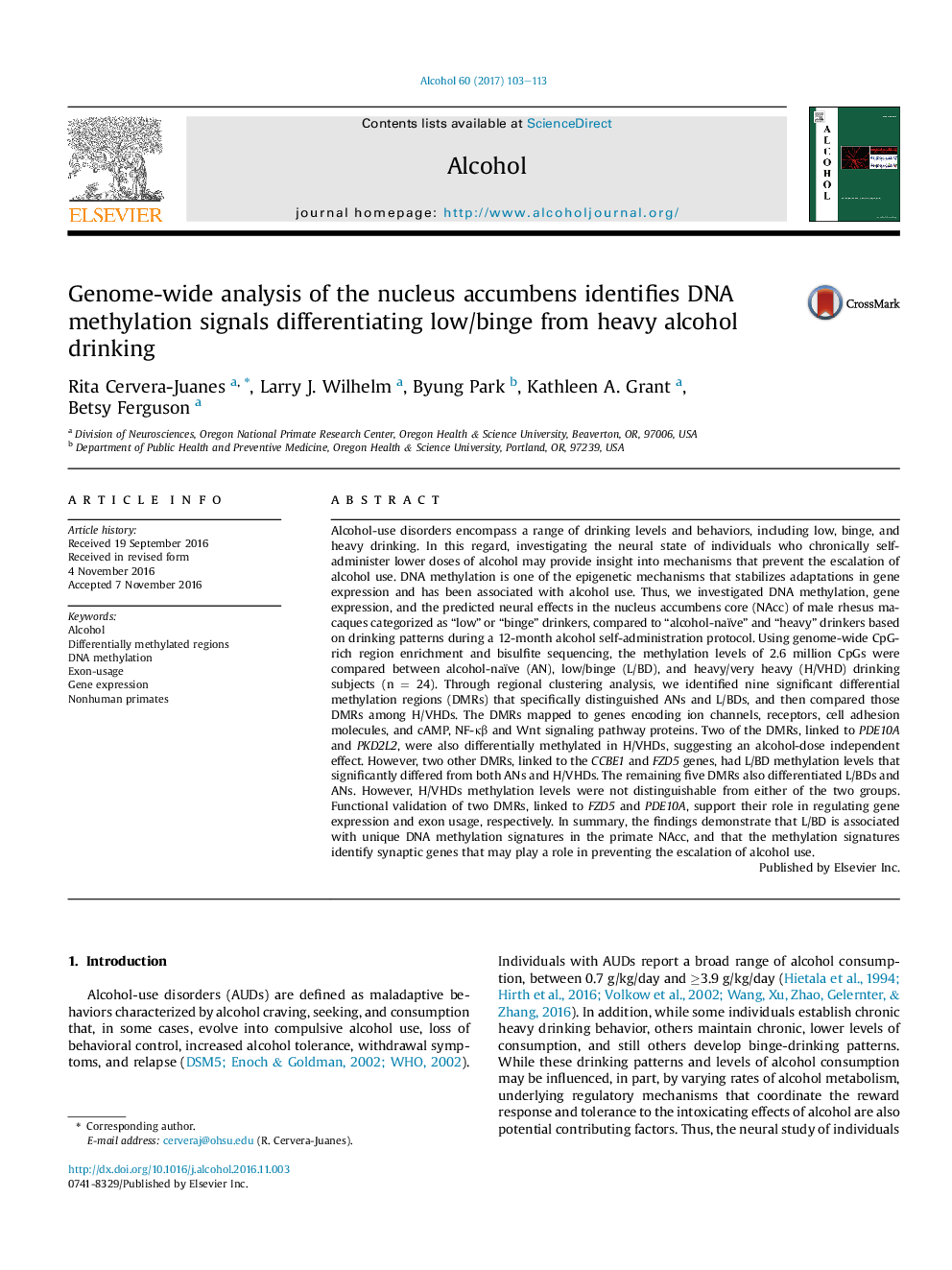| کد مقاله | کد نشریه | سال انتشار | مقاله انگلیسی | نسخه تمام متن |
|---|---|---|---|---|
| 5119593 | 1485969 | 2017 | 11 صفحه PDF | دانلود رایگان |

- Differential methylation analysis identifies genes exclusively associated with low/binge alcohol use.
- Low/binge methylation is linked to cell adhesion, cAMP, Wnt, and NF-κβ signaling genes.
- The association between DNA methylation and exon usage is reported.
- DNA methylation identifies mechanisms that may prevent escalating alcohol use.
Alcohol-use disorders encompass a range of drinking levels and behaviors, including low, binge, and heavy drinking. In this regard, investigating the neural state of individuals who chronically self-administer lower doses of alcohol may provide insight into mechanisms that prevent the escalation of alcohol use. DNA methylation is one of the epigenetic mechanisms that stabilizes adaptations in gene expression and has been associated with alcohol use. Thus, we investigated DNA methylation, gene expression, and the predicted neural effects in the nucleus accumbens core (NAcc) of male rhesus macaques categorized as “low” or “binge” drinkers, compared to “alcohol-naïve” and “heavy” drinkers based on drinking patterns during a 12-month alcohol self-administration protocol. Using genome-wide CpG-rich region enrichment and bisulfite sequencing, the methylation levels of 2.6 million CpGs were compared between alcohol-naïve (AN), low/binge (L/BD), and heavy/very heavy (H/VHD) drinking subjects (n = 24). Through regional clustering analysis, we identified nine significant differential methylation regions (DMRs) that specifically distinguished ANs and L/BDs, and then compared those DMRs among H/VHDs. The DMRs mapped to genes encoding ion channels, receptors, cell adhesion molecules, and cAMP, NF-κβ and Wnt signaling pathway proteins. Two of the DMRs, linked to PDE10A and PKD2L2, were also differentially methylated in H/VHDs, suggesting an alcohol-dose independent effect. However, two other DMRs, linked to the CCBE1 and FZD5 genes, had L/BD methylation levels that significantly differed from both ANs and H/VHDs. The remaining five DMRs also differentiated L/BDs and ANs. However, H/VHDs methylation levels were not distinguishable from either of the two groups. Functional validation of two DMRs, linked to FZD5 and PDE10A, support their role in regulating gene expression and exon usage, respectively. In summary, the findings demonstrate that L/BD is associated with unique DNA methylation signatures in the primate NAcc, and that the methylation signatures identify synaptic genes that may play a role in preventing the escalation of alcohol use.
Journal: Alcohol - Volume 60, May 2017, Pages 103-113